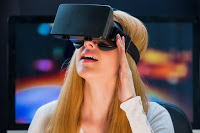 After a week that ended with horrific violence and atrocity, it was warming to see so much support for both France and Beirut. Many gave their respect to the events in Paris by gathering together and acknowledging a moment of silence, and others made signs with the peace symbol. However this peace symbol was different. This time, the lines in the middle of the circle made up the Eiffel Tower. You've probably seen it by now, as it's all over social media at this point, but what you probably don't know is how this design got started. According to an article posted on Fast Company this week, a 32-year-old French designer by the name of Jean Jullien created the image upon hearing about the news while on vacation abroad. '"I wanted to create a symbol of peace,' Jullien says of the hand-drawn illustration that combines the Eiffel tower and the universal symbol of peace. 'It was a raw reaction. It was the only thing I could think of doing and my way of expressing to all of my loved ones in Paris ... I was thinking about them' In the article Jullien also stated that the world needs symbols that can express what we cannot, at the moment, say. The image, which he posted to all of his social media accounts has become a global symbol for the hope and support for the victims' families in Paris. After 24 hours, the image was posted by Instagram and accumulated more than 1.3 million likes. In dark times, like the ones we find ourselves in today, it is uplifting to have images to remind us of our unifying factor; that human good will prevail.
After a week that ended with horrific violence and atrocity, it was warming to see so much support for both France and Beirut. Many gave their respect to the events in Paris by gathering together and acknowledging a moment of silence, and others made signs with the peace symbol. However this peace symbol was different. This time, the lines in the middle of the circle made up the Eiffel Tower. You've probably seen it by now, as it's all over social media at this point, but what you probably don't know is how this design got started. According to an article posted on Fast Company this week, a 32-year-old French designer by the name of Jean Jullien created the image upon hearing about the news while on vacation abroad. '"I wanted to create a symbol of peace,' Jullien says of the hand-drawn illustration that combines the Eiffel tower and the universal symbol of peace. 'It was a raw reaction. It was the only thing I could think of doing and my way of expressing to all of my loved ones in Paris ... I was thinking about them' In the article Jullien also stated that the world needs symbols that can express what we cannot, at the moment, say. The image, which he posted to all of his social media accounts has become a global symbol for the hope and support for the victims' families in Paris. After 24 hours, the image was posted by Instagram and accumulated more than 1.3 million likes. In dark times, like the ones we find ourselves in today, it is uplifting to have images to remind us of our unifying factor; that human good will prevail.
Ever since I was little I always hated taking my temperature. I always worried the thermometer wasn't sitting right or, if checking it via mouth, that it would be affected by the cold drink I had just drank. But we live in the future folks. Now, according to a Fast Company article, there is such thing as a temperature reading sticker for babies. That's right. Not only are you able to tell the temperature of a sick one, but they are able to wear a cool sticker for it! The sticker is called The Fever Scout and is priced currently at $59. 'It's a reusable sticker that you apply to your baby's torso to constantly monitor his temperature. Via Bluetooth and an accompanying app, it will send a trend graph of temperature updates to your phone, and even wake you in the middle of the night if a fever gets too high.' This cool new piece of technology comes from a company called Vivalnk that also enlisted NewDealDesign, the firm behind the Fitbit. The article also goes into quite a bit of detail on how the product was designed and how the design of the finished product eases the mind of parent with a sick child. ''the worst case scenario for The Fever Scout would be that, instead of being a device that can worry for a parent, it became a conduit to amplify their concerns with more data points.' I highly recommend reading the entire article, as it is a fascinating technological innovation and provides interesting insight as to how it these innovative pieces are designed.
An article on Fast Company this week discusses the development and design of Samsung's Gear VR as it was largely spurred on by consumer insights. According to the VP of Immersive Products and Virtual Reality, Nick DiCarlo, ''Consumer and developer feedback is critical and all of the tweaks we've made to the device have been as a result of what we hear from the community. We are committed to continuously improving and bringing this amazing new technology to millions, and that takes a careful ear to listen and learn from the passionate VR community and developers we work with every day.'' Many consumers had comments from the previous version that centered around the touchpad which is located on the right side of the headset. In its newest version, Samsung changed the touchpad from being flat and squarish, to a cross-shaped groove that is more conducive to swiping up and down. This article is great example of how consumer insights and market research can impact the design of a product and its evolution thereafter.
Nichole Dicharry, is a Digital Marketing Assistant at IIR USA, Marketing and Finance Divisions, who works on various aspects of the industry including social media, marketing analysis and media. She can be reached at Ndicharry@iirusa.com


